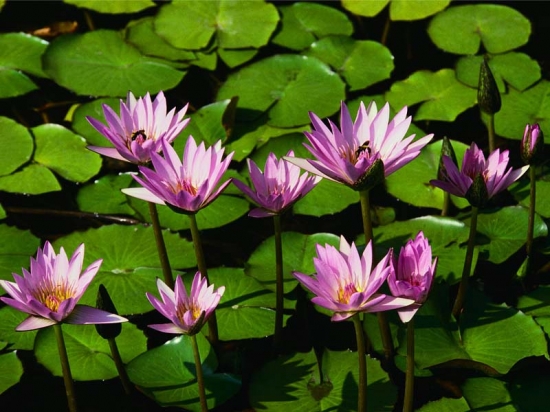
Silica gel, sensational development
– This new chemical compound is expensive, and rather difficult to work with, but the results well merit its use. Exceptionally beautiful are roses, camellias, delphiniums, dahlias, Christmas roses, and daffodils preserved in gel. After continual tests, I am convinced that it is the best of all materials for drying flowers. However, let me assure you that if your time is limited or your pocketbook slim you must not feel that it is a necessity. The other mediums have much to offer; I have been using them for years and know that they will enable you to dry all of the lovely flowers that you could wish. If you decide to invest in silica gel, you should have a minimum of five pounds, but ten or fifteen are preferable. This will be costly but once you have purchased a supply it will last always. I feel that it is impractical to use silica gel for foliage when the other mediums will do just as well, and other methods (glycerine and pressing) are much easier and often better. I advise, in most cases, using silica gel for flowers only.
The different mediums
A. Silica Gel
– Silica gel has many industrial uses, among which are the packaging of baby powders and certain foods such as potato chips and cereals. It is also now being prepared especially for drying flowers and is sold under brand names at garden shops, hardware, chain and drug stores, and by mail order.
– These preparations are composed of a combination of two sizes of the gel, a fine mesh that is white and a small amount of a coarser mesh that is blue. When the blue "Tel-Tale" fades to white or turns pink it is an indication that it has absorbed moisture and cannot be used again until it has been reactivated. This is done by placing it in a shallow pan in the oven at 300 degrees F. until the blue colour returns. It should then immediately be poured into an airtight container and allowed to cool before re-using. Silica gel may be used over and over again.
– Mixing your own silica gel compound is not very practical. It is more expensive than the ready mixed preparations and also the materials are not always available in small quantities. If for some reason, however, you do prefer to make your own mix, here is the formula that I advise: mixes thoroughly 1/3 lb. of 6-16 mesh silica gel (Tel-Tale) with 5 lbs. of 28-200 mesh.
– An interesting feature about silica gel and one that you should know is that it could actually be soaking wet, yet to the touch and all outward appearances it will seem to be "bone dry". For this reason the "Tel-Tale" blue, or indicating grain, is absolutely necessary to let you know by its colour when the gel must be dried out in the oven.
B. Meal and Borax
– Combine ten parts of white cornmeal with three parts borax and mix thoroughly. (If some of this adheres to flowers after drying, it may be shaken off or removed with a small paintbrush.)
C. Perlite Aggregate (crushed volcanic rock)
– This is used in mixing plaster and can be obtained at building supply houses. It is fast acting and very inexpensive.
D. Sand and Borax
– If white corn meal is not available in your vicinity, sand may be used in its place, washed and sifted if necessary. I prefer meal and borax but when sand is lightened with borax in proportions according to weight of the sand you will find it efficient. Heavy sand needs three fourths borax to one fourth sand, whereas fine sand requires only one fourth borax to three fourths sand.
– After you have chosen the medium that you wish to use, the next step is to decide whether the flowers should be dried face-up (example, peonies), face-down (gloriosa daisies), or horizontally (spike of delphinium).

Leave Your Comments